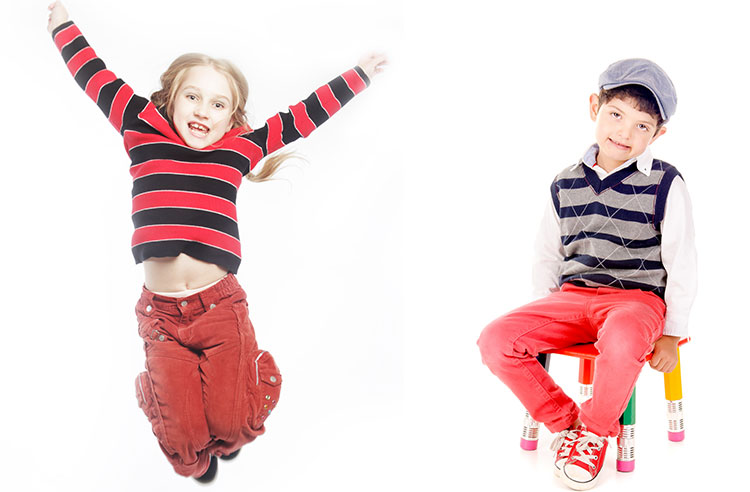A9: Just Following Directions
1. Overview
Listen to and then follow a short sequence of instructions. This will cultivate your child’s ability to remember and then execute actions in the right order, while also continuing to develop his ability to listen attentively.
“Jump up in the air. Next, sit on the stool.”
2. Materials
Small props (household objects, picture cards) optional ↑ Top3. Activity
Remind the child that he has already learned about listening carefully and doing things in order. Then give your child a short sequence of instructions to follow. For example: “Stand up. Spin around. Pick up your teddy bear.” The child must listen to the whole set of instructions before starting.Video: How to play Just Following Directions
As the child gets better at understanding, remembering, and following orders, gradually make them more complex. Below are some helpful age guidelines (from the Georgia Early Learning and Development Standards) to let you know what you can reasonably expect from your child:
- Age 2-3 Years: one-step orders/commands
- Age 3-4 Years: two-step commands without prompts; three-step commands with prompts, as needed
- Age 4-5 Years: three-step commands without prompts; four-step commands with prompts, as needed
- Beginner: “Touch your toes. Put your hands on your head.”
- Intermediate: “Hop to the table. Pick up the red and yellow crayons. Cover your eyes. Stick out your tongue.”
- Advanced: “Touch your nose with both of your thumbs. Hold the picture of the mouse while you crawl behind the sofa. Smile before you spin around.”
4. Confidence Builder
To help a child get the hang of this activity, you can give little visual prompts or reminders if he finishes one order and forgets what comes next. Alternatively, you can follow the orders along with him at first. ↑ Top5. Small Groups (2-5 children)
Lesson Objective: Children will be able to remember and execute actions sequentially. GELDS (Georgia Early Learning & Development Standards): CLL1.3b (Activities for this standard will be increased in difficulty to match the children’s age group.) Adaptation: Read the main activity, watch the video, and follow the instructions above, with the following changes: Play Teddy Bear, Teddy Bear with the group, giving two or three directions for different motions at a time. The children should not do the actions until you say “Go!”Teddy Bear, Teddy Bear, turn around and touch the ground — Go! Teddy Bear, Teddy Bear, shine your shoes and read the news — Go! Teddy Bear, Teddy Bear, go upstairs and say your prayers — Go! Teddy Bear, Teddy Bear, turn out the light and say goodnight — Go!Reinforcement:
- Play Teddy Bear, Teddy Bear again. After each line, ask the children, “What did you do first? What did you do last?”
- Play Simon Says, using directions with two to three steps. Remember not to do any action unless it begins with “Simon says.”
- “Simon says, ‘Touch your toes.’ Simon says, ‘Tap your knees.'”
- “Simon says, ‘Turn around.’ Simon says, ‘Jump three times.’ Simon says, ‘Sit down.'”
Leave a Reply
